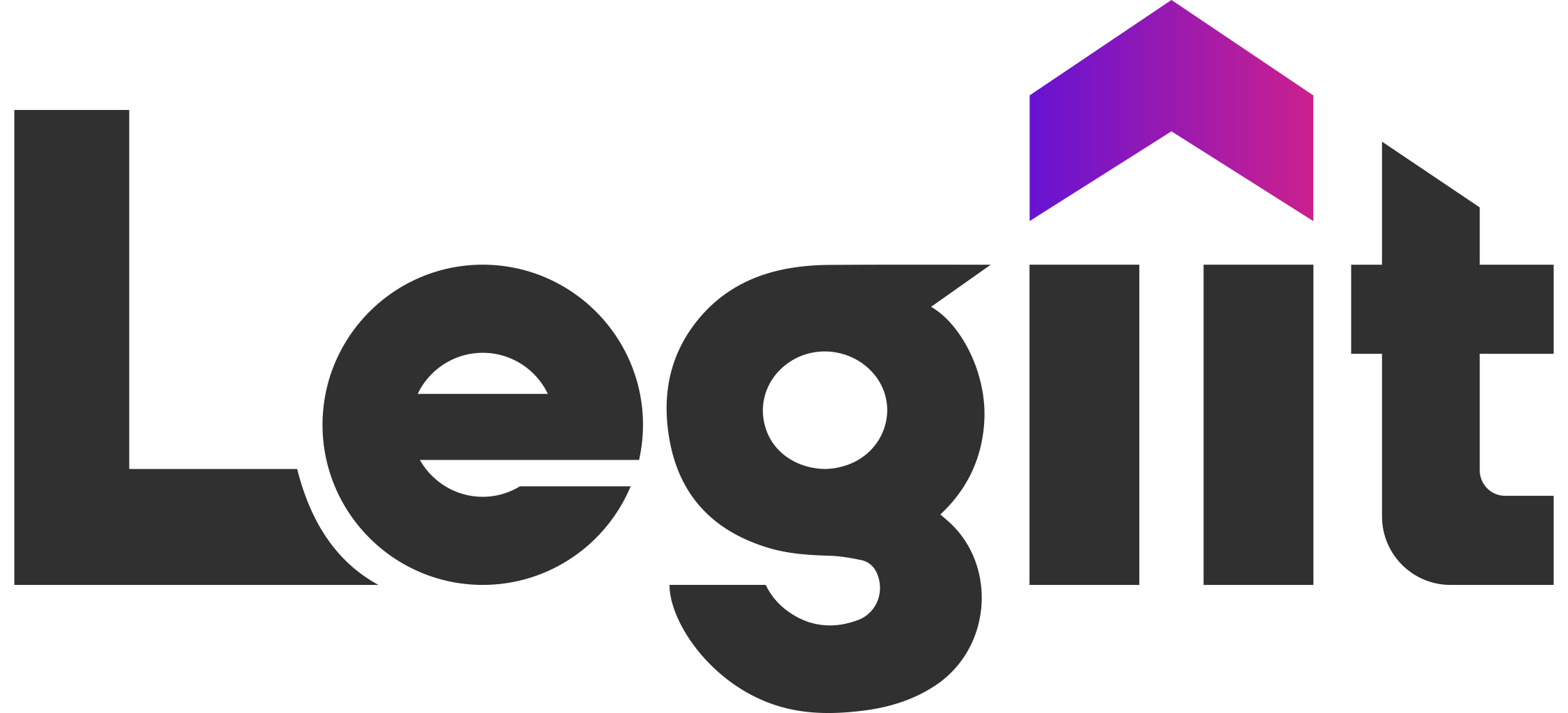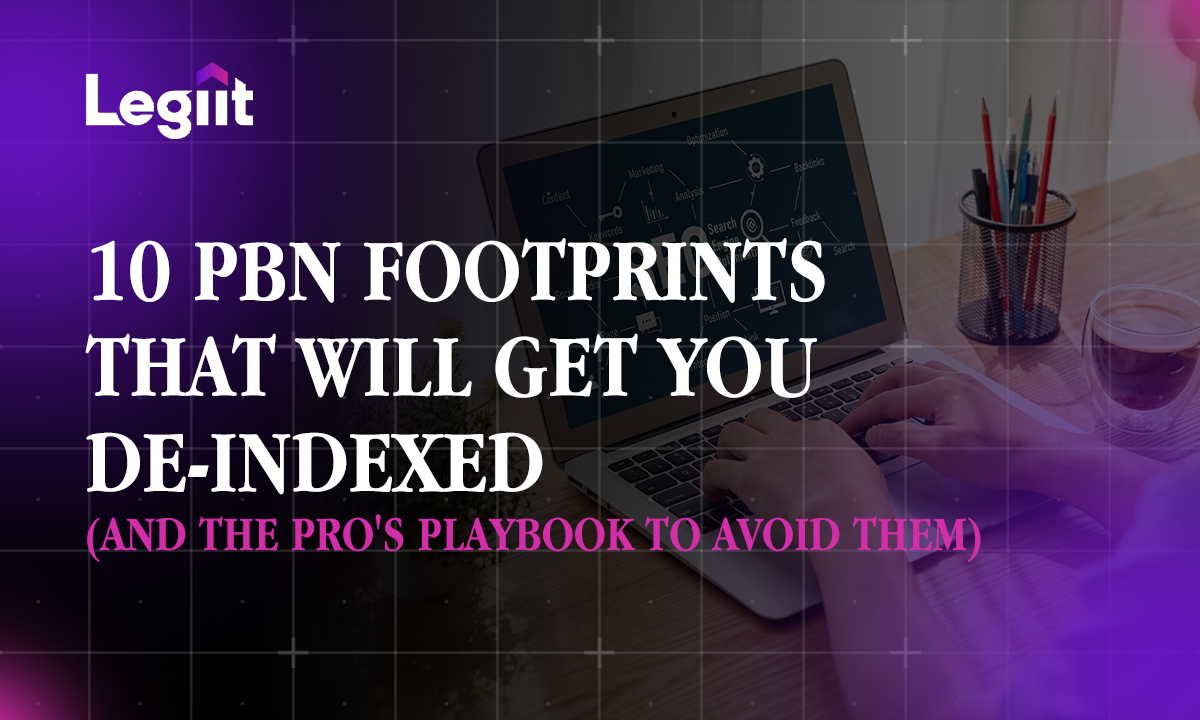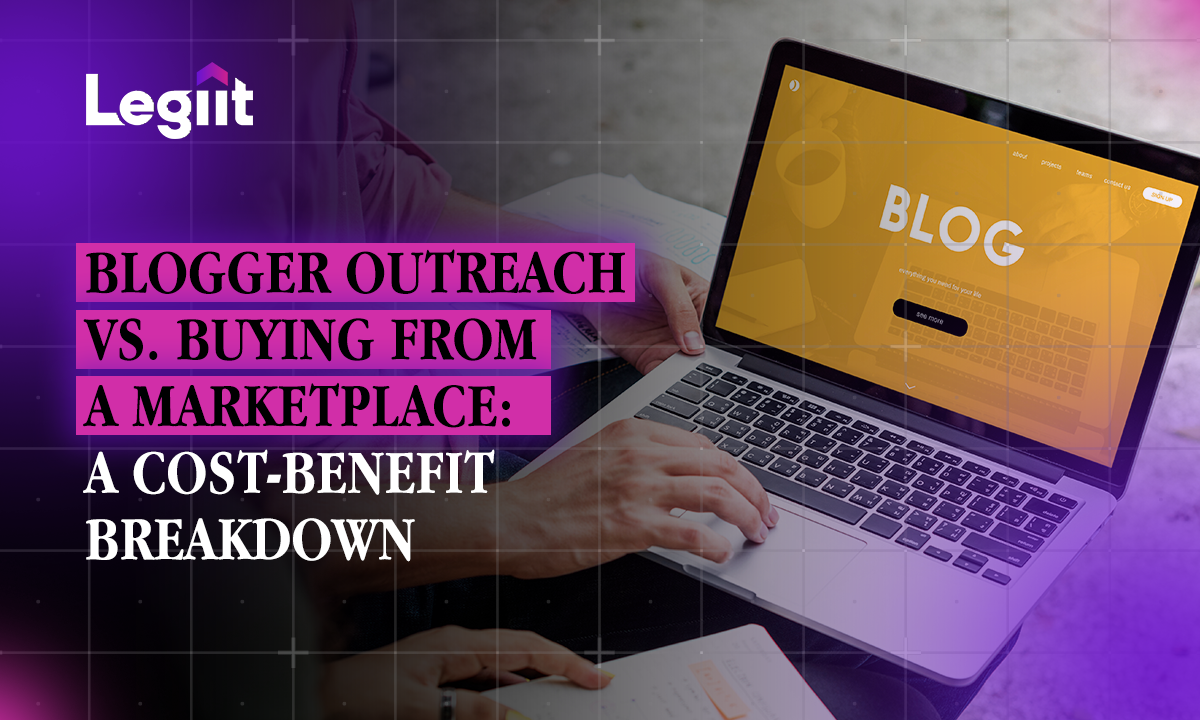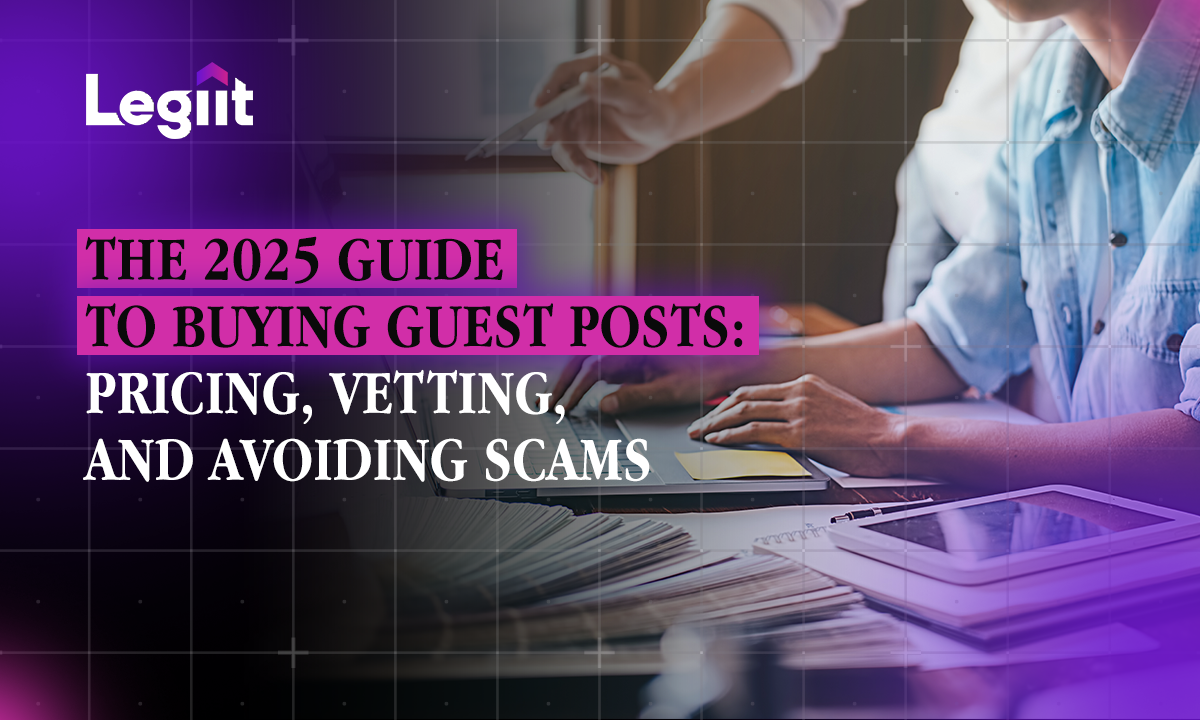In the high-stakes world of Private Blog Networks, the game is won or lost in the shadows. The most powerful PBNs are the ones that look like they don't exist at all. The ones that get de-indexed are those that leave clumsy, obvious clues for Google to find.
These clues are called footprints.
A footprint is any pattern technical, on-page, or behavioral that connects your supposedly independent websites together. In 2025, Google's AI and pattern-recognition capabilities are more powerful than ever. They are specifically designed to find these patterns.
This is your counter-espionage guide. We will break down the 10 most dangerous footprints that can get your entire network burned and provide the professional's playbook for making your network statistically indistinguishable from a random collection of real websites.
PBN Footprints: The Cheat Sheet
Here's what you absolutely need to know to stay safe:
- The #1 Defense: Randomization. A natural portfolio is a random portfolio. Break every pattern you can.
- The Critical Errors: Hosting and WHOIS records. Get these wrong, and nothing else you do matters. They are the easiest and most definitive footprints to detect.
- The Pro Mindset: Think like an algorithm. Your job is to analyze your own network for patterns and systematically erase them.
- The Goal: To make your network look like a random assortment of legitimate websites owned by different people, with different hosts, in different locations.
On This Page
- Footprint #1: The Shared Hosting Footprint
- Footprint #2: The WHOIS & Registrar Footprint
- Footprint #3: The Content Footprint
- Footprint #4: The Site Design & Tech Footprint
- Footprint #5: The On-Site Analytics & Monetization Footprint
- Footprint #6: The Outbound Link Profile Footprint
- Footprint #7: The Anchor Text Footprint
- Footprint #8: The Inbound Link Profile Footprint
- Footprint #9: The Financial Footprint
- Footprint #10: The Behavioral & Timing Footprint
- PBN Footprints FAQ
Footprint #1: The Shared Hosting Footprint
What is it? Hosting multiple PBN sites on the same server, IP address, C-Class IP subnet, or even with the same hosting company.
Why is it dangerous? This is the original, and still the most definitive, way networks are detected. If all your sites resolve to the same small block of IPs owned by "Shady SEO Host Inc.," it's trivial for an algorithm to connect them.
Risk Level: CRITICAL
The Professional's Playbook: How to Avoid It
- One Site, One IP: Never host more than one PBN domain on a single IP address. This is a non-negotiable rule.
- Diversify Your Providers: Do not buy all your hosting from one company. A natural portfolio uses a mix of major cloud providers (AWS, Vultr, DigitalOcean), reputable shared hosts (HostGator, Bluehost), and other smaller hosts.
- Use Managed PBN Hosting: For those who value convenience, services like Easy Blog Networks or LaunchCDN automate this process, deploying your sites across hundreds of different IPs and datacenter locations from major providers.
- Consider Diversified Managers: Services like Bulk Buy Hosting offer a different model, placing your sites on unique cPanel accounts from a wide variety of smaller, distinct hosting companies.
Footprint #2: The WHOIS & Registrar Footprint
What is it? Using the same name, email, or physical address in the public WHOIS registration data for your domains, or registering all domains with the same company (e.g., GoDaddy).
Why is it dangerous? WHOIS data is a public directory. It's a simple database query for Google to find every domain registered to a single email address or person.
Risk Level: CRITICAL
The Professional's Playbook: How to Avoid It
- Always Use WHOIS Privacy: Every single PBN domain must have WHOIS privacy enabled from day one. This masks your personal information.
- Diversify Your Registrars: Spread your domain registrations across multiple different companies like Namecheap, Porkbun, Sav.com, and Google Domains.
- Use Different Privacy Services: Using Namecheap's privacy for one domain and GoDaddy's for another adds a small but important layer of diversity.
Footprint #3: The Content Footprint
What is it? Using spun, duplicate, or low-quality AI-generated content across your network. This also includes using the same article structure, image sources, or author persona on every site.
Why is it dangerous? Google's Natural Language Processing (NLP) models are incredibly advanced. They can easily detect spun or repetitive content patterns and will flag your sites as low-quality and manipulative.
Risk Level: HIGH
The Professional's Playbook: How to Avoid It
- Unique, Quality Content: Every single post on your PBN must be unique, readable, and at least 500 words.
- Vary Your Content: Use different article lengths, formatting styles, and tones.
- Hire Different Writers: To create truly diverse writing styles, hire a variety of different content writers on a marketplace like Legiit. This prevents a single author's "voice" from becoming a footprint.
Footprint #4: The Site Design & Tech Footprint
What is it? Using the same WordPress theme, the same set of plugins, or even the same admin username across all the sites in your network.
Why is it dangerous? Code signatures are easy for crawlers to detect. If 50 sites are all using the "GeneratePress Premium" theme with the "Yoast SEO" and "Contact Form 7" plugins, it creates a strong correlation.
Risk Level: HIGH
The Professional's Playbook: How to Avoid It
- Use Different Themes: Use a wide variety of popular, well-coded WordPress themes (both free and premium) across your network.
- Randomize Your Plugin Stack: One site might use Yoast, another might use Rank Math. One might use a simple contact form, another might not have one at all. Make your plugin footprint look random.
- Unique Usernames: Never use "admin" as your username. Use different, unique usernames for the administrator account on every single blog.
Feeling Overwhelmed by Footprints?
Avoiding these 10 footprints is a complex, full-time job. On Legiit, you can hire PBN experts who live and breathe network security, building you a powerful asset that's designed to be invisible from day one.
Find a PBN Security Expert on Legiit
Footprint #5: The On-Site Analytics & Monetization Footprint
What is it? Using the same Google Analytics, Google Search Console, or AdSense ID across your PBN sites and your money site.
Why is it dangerous? This is the digital equivalent of handing Google a signed confession. You are explicitly telling them that the same entity owns and operates all of these properties.
Risk Level: CRITICAL
The Professional's Playbook: How to Avoid It
- Never Use Google Products on PBNs: Do not install Google Analytics or connect your PBNs to your Google Search Console account.
- Use Privacy-Focused Analytics: If you must have analytics, use a privacy-focused alternative like Fathom or Plausible, and use a different account for each site.
- No Monetization: Do not run AdSense or other ad network codes on your PBN sites. Their primary purpose is to pass link equity, not to make money directly.
Footprint #6: The Outbound Link Profile Footprint
What is it? A PBN site that links out only to your money site and to no other external websites.
Why is it dangerous? Real websites link out to a variety of helpful, relevant resources, not just one commercial site over and over. A purely self-serving link profile is a clear sign of a site that exists only for manipulation.
Risk Level: HIGH
The Professional's Playbook: How to Avoid It
- Link to Authority Sites: In every article where you link to your money site, you must also include 1-2 outbound links to non-competing, high-authority sites like Wikipedia, a major news source, or a top industry blog.
- Vary Your Link Placement: Don't always put your money site link in the first paragraph. Mix it up to avoid predictable patterns.
Footprint #7: The Anchor Text Footprint

What is it? Over-optimizing your backlink profile by using your exact-match "money" keyword as the anchor text for most of your PBN links.
Why is it dangerous? A natural backlink profile is diverse. An over-abundance of keyword-rich anchors is a classic spam signal that Google's Penguin algorithm (and its modern successors) are designed to detect and penalize.
Risk Level: HIGH
The Professional's Playbook: How to Avoid It
- Follow the Anchor Text Pyramid: As detailed in our Advanced PBN Anchor Text Guide, your profile should be dominated by safe, natural anchors.
- Prioritize Branded & Naked URLs: The majority of your anchors should be your brand name and plain URLs.
- Use Exact Match Sparingly: Use your exact keyword for 1-5% of your links, maximum. Use them like a potent spice, not the main ingredient.
Footprint #8: The Inbound Link Profile Footprint
What is it? This is a more advanced footprint. It's when all the expired domains you purchase for your PBN have the same type of backlink profile (e.g., they all come from the same type of directories or all have spammy comment links).
Why is it dangerous? It suggests that all domains were acquired using the same automated scraping method, creating a pattern in the type of asset you are using.
Risk Level: MEDIUM
The Professional's Playbook: How to Avoid It
- Vet Every Domain: Meticulously analyze the backlink profile of every expired domain before you purchase it.
- Seek Diverse Profiles: Build a network with domains that have a variety of different, natural-looking backlink profiles.
- Hire an Expert: Finding clean, diverse expired domains is an art. Use a trusted expired domain research service on Legiit to find powerful and varied assets.
Footprint #9: The Financial Footprint
What is it? Use the same credit card or PayPal account to purchase all of your domains, hosting accounts, and other services across multiple providers.
Why is it dangerous? While private, this creates a clear financial link between all your assets. In the event of a deep, manual investigation, this data could theoretically be used to connect your network.
Risk Level: MEDIUM
The Professional's Playbook: How to Avoid It
- Use Different Payment Methods: For maximum security, use different credit cards, virtual credit card numbers, or separate, unlinked PayPal accounts for different batches of your PBN assets.
Footprint #10: The Behavioral & Timing Footprint
What is it? Performing the same actions across your network in a coordinated, unnatural way.
Why is it dangerous? Algorithms are designed to spot unnatural, non-random behavior.
Risk Level: HIGH
The Professional's Playbook: How to Avoid It
- Stagger Everything: Do not register all your domains on the same day. Do not set up all your hosting accounts in the same week. Do not publish your first posts on all sites at the same time.
- Drip-Feed Your Links: Do not point all 20 of your new PBN links to your money site in the same month. Drip-feed your links slowly over several months to mimic a natural link velocity.
- Let Sites "Age": After setting up a new PBN site, let it sit for several weeks or even a month before you publish the first post with a link to your money site.
PBN Footprints FAQ
What is the meaning of PBN?
PBN stands for Private Blog Network. It is a network of websites you control, built on expired domains, used to build links to a primary website.
Is PBN good for SEO?
A well-managed, footprint-free PBN can be extremely powerful for SEO. However, a poorly managed one is a guaranteed penalty. It is a high-risk, high-reward strategy.
How do you check PBN sites?
You check a PBN site by performing due diligence on its backlink profile (using Ahrefs), its historical content (using the Wayback Machine), and its on-page content quality to ensure it has real authority and is not a spam site.
What is a PBN in Backlink Building?
In backlink building, a PBN is a source of links where you have 100% control over the placement, anchor text, and timing, which is not possible with other methods like guest posting.
Don't Risk Your Investment. Build It Right.
Avoiding these 10 footprints is the difference between a long-term, profitable asset and a wasted investment. The level of detail and discipline required is immense.
Instead of navigating this minefield alone, you can hire a vetted professional on Legiit who specializes in building secure, powerful, and footprint-free PBNs.














 Download
Download